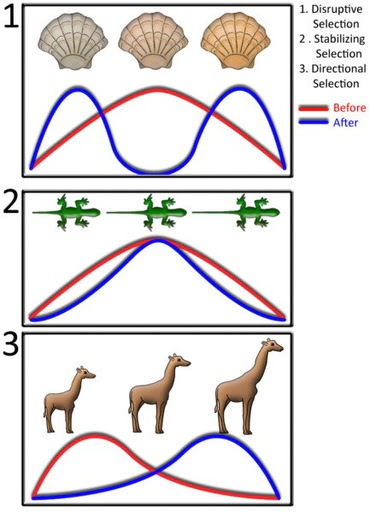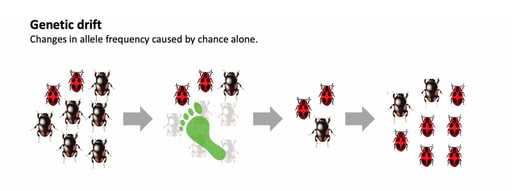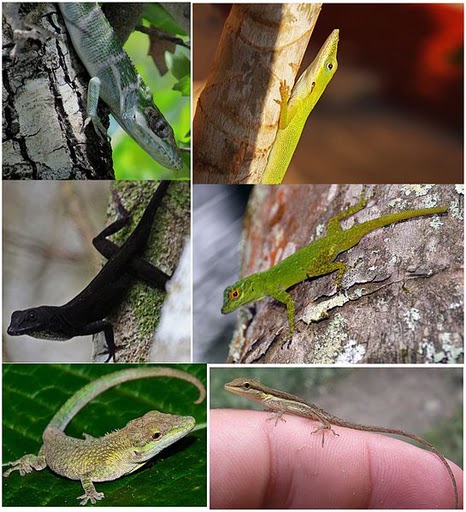The vast variety of living organisms that we observe today is the result of the process of natural selection and evolution, but what does this really mean? Natural selection refers to the phenomenon where certain traits are favored by the environment over others, and over long periods of time, this process leads to evolution.
If we were to have the same environment and the same group of organisms, would natural selection produce the same evolutionary outcomes? By examining the concept of natural selection and studying the natural experiment of islands, we can come closer to finding the answers to these inquiries.
What is the Impact of the Environment on Evolution?
A lot of us are familiar with the phrase “natural selection”, but what is its true definition?
It suggests a form of deliberate selection, either by the environment or nature, but much of it is unintentional, and even more is by chance.
Organisms do not develop with the purpose of doing something. Every population is a mixture of characteristics, and each characteristic is determined by several genes. Certain characteristics are advantageous, while others are not. If a characteristic enables an organism to have a slight advantage in an environment, it becomes more probable for them to reproduce and pass on the genes associated with that particular characteristic.
With the passage of time, these modifications build up, resulting in organisms having distinct appearances and behaviors from one another, and in some cases, even leading to the formation of new species.
 Three different types of selection (Photo Credit : Azcolvin429/Creative commons)
Three different types of selection (Photo Credit : Azcolvin429/Creative commons)
Disruptive selection benefits two extremes in a population: long and short. As time passes, individuals with medium length have less opportunity to pass on their genes, causing them to decrease in frequency. On the other hand, stabilizing selection does not favor extremes in the environment.
Directional selection
Directional selection occurs when there is a preference for one extreme of a range of characteristics, whether it is long or short, which causes the entire population to move in that particular direction.
Is Natural Selection the Driving Force of Evolution?
When contemplating the concept of natural selection, it is crucial to bear in mind two fundamental factors.
One of the factors that can lead to genetic changes in a population is known as genetic drift.
Unusual occurrences are frequent in the natural world. Volcanic eruptions, seismic activities, and overflowing rivers regularly result in the indiscriminate loss of lives within a population. These occurrences are referred to as “bottleneck events,” as they significantly decrease the population size. The surviving individuals within the population possess a limited number of genes, which means that the post-bottleneck population may lack the genes that would have been advantageous in other circumstances.
After a bottleneck event, genetic drift occurs, resulting in a decrease in the total number of genes in a gene pool.
Once again, it should be emphasized that natural selection can only influence and shape the characteristics of existing organisms.

There is an image depicting genetic drift. It shows the death of a large number of brown beetles. As a result, the generation after this event would have a higher population of red insects compared to black insects. This image is the one we require.
The second key concept to keep in mind is that not all observed traits are a result of natural selection. Some traits have no impact on the survival or reproductive success of an organism and are simply inherited along with the traits that do. A notable research paper titled “The Spandrels of San Marco” challenged the notion that every trait is an adaptation.
Similarly, numerous characteristics are considered spandrels. This indicates that they are unintentional… perhaps delightful, but ultimately unplanned.
Thus far, we have only examined the relationship between the environment and a single species in terms of natural selection. However, species also interact with each other. There is intense competition for resources, and each organism requires different inputs. This gives rise to the concept of “niches”. An ecosystem is teeming with numerous niches, or possibilities, that a species or a group of species can opt to inhabit. The concept of occupying niches is referred to as adaptive radiation.

Adaptive radiation in Darwin’s finches (Photo Credit: VectorMine/Shutterstock)
If we have a specific ecosystem with a fixed number of niches, will they all be filled in the same manner? Imagine a massive evolutionary trial, consisting of numerous identical environments and starting organisms. Would they all undergo the same evolutionary changes just because the environment is identical? Or does randomness and drift come into play, leading each system in a different direction? Is our evolutionary destiny, as well as the destiny of all species around us, already predetermined by the environment in which we exist?
The Lizard, The Island And The Ecomorph
Islands provide us with a substitute for such a colossal evolutionary experiment. Each island within a specific region acts as a distinct, separate, and identical experiment. By studying the life on each island, we can gather clues to determine if the outcome of evolution is always the same.
Our experiment commences in four islands located in the Greater Antilles: Jamaica, Puerto Rico, Hispaniola, and Cuba. Anolis lizards, which belong to a genus comprising numerous species, inhabit a wide range of ecosystems. Researchers conducted a study on 55 lizards across these four islands. By examining the habitats these lizards occupy, as well as the ecosystems themselves, they categorized six different types of lizards, known as ecomorphs:
1. Crown giant lizards, which reside in the canopies of trees.
2. Grass-bush lizards.
3. Trunk-dwelling lizards.
4. Lizards positioned between the trunk and the crown of trees.
5. Lizards positioned between the trunk and the ground.
6. Lizards that inhabit twigs and branches.
An ecomorph can be defined as a “species with the same structural habitat/niche, similar in morphology and behavior, but not necessarily close phyletically,” as stated by Ernest Edward Williams in 1972.
Here is an image depicting some examples of Anolis ecomorphs (Photo Credit : Anolis_heterodermus01/Creative commons):

Now, imagine there are six potential niches for a genus of lizards to occupy on each island. If these lizards were left undisturbed for millions of years, would the same species emerge? Or would they initially divide themselves into six groups before dispersing across each island?
Despite having a common ancestor, a remarkable phenomenon occurred where all the lizards on every island developed the identical groupings of lizards, neatly categorized into six groups. It is intriguing to note that grass-bush lizards from separate islands exhibited greater similarities than grass-bush lizards and trunk-dwelling lizards from the same island.
On four different occasions, evolution occurred. On each occasion, the environment played a role in shaping the outcome. However, the question remains: why did this happen?
One possible explanation is that there was no genetic drift. This is supported by genetic analysis of the Anolis lizards, which showed that none of them experienced a reduction in population size. As a result, natural selection had the same genetic material to work with on all four islands.
Alternative Explanation for the Diversification of Anolis Lizards
Another possible reason for the diversification of Anolis lizards is the presence of limited morphological adaptations. This implies that there were a finite number of choices available for body types and ecological niches that these lizards could inhabit. However, this theory does not appear to hold true. In larger islands that have mountainous areas, Anolis lizards with entirely distinct ecomorphs and morphologies have evolved.
Conclusion
Why did history repeat itself in the field of natural sciences, despite the fact that we observe a wide variety of life forms around us?
It appears that there was a remarkable absence of randomness, which is not commonly observed in biological systems. The lizards in each environment across the different islands in the Greater Antilles faced similar pressures. Furthermore, there was no genetic drift, so natural selection acted on the same set of genes every time. While evolution may seem mysterious and unpredictable, it is possible that without genetic drift and with identical starting conditions, the process of natural selection yields the same outcome. Therefore, it is true that history does repeat itself in the realm of natural sciences, given the right circumstances!
